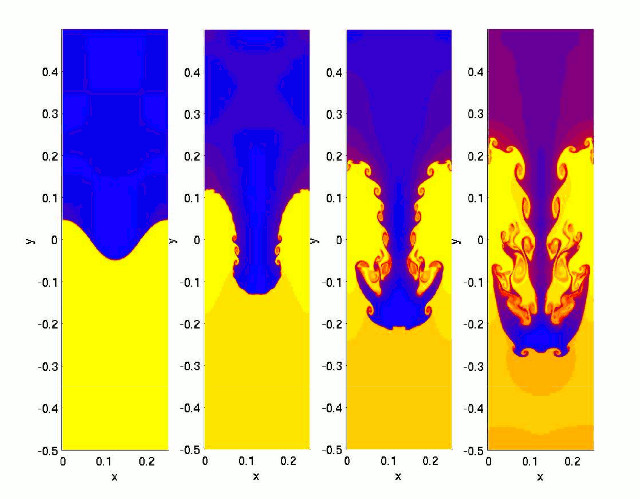Mushroom clouds (perhaps more properly known as pyrocumulus clouds) are traditionally associated with nuclear explosions, but any sufficiently large explosion (for example, a volcanic eruption) will create a mushroom cloud.

The mushroom cloud resulting from the Priscilla test of Operation Plumbbob.
When a large explosion occurs a cloud of very hot gas is created. This hot gas, being less dense than the surrounding air, rises rapidly upwards. As this cloud of hot gas rises it pushes against the air above it and this air resistance causes the top layer to move sideways whilst the hotter gas below continues rising upwards, creating a swirling doughnut-shaped vortex (in the photograph above a very hot “filament” is visible at the centre of this vortex). As the “cap” rises this swirling vortex pulls in cooler air from ground level, creating the “stalk” on which the cap sits.
The formation of a mushroom cloud during the Tumbler-Snapper series of nuclear tests.
The shape of a mushroom cloud is the result of a Rayleigh-Taylor instability at the interface between the hot less-dense and cold more-dense air. These instabilities occur in a number of different situations, and can be easily demonstrated at home by dropping coloured oil into water, creating tiny upside-down mushroom clouds as shown below in photographs by James Riordon of AIP.


The simulated formation of a Rayleigh-Taylor instability.

I wish I had used transparent wine glass for the ink drop experiment. When I did the ink drop experiment, I used a small bowl(non-transparent),top view had similar diffusing structures, ring formation etc.etc
http://theopticaltrek.com/2012/08/18/inkdrop_ring_structures/the-optical-trek-by-gaurav-singh-26/#main